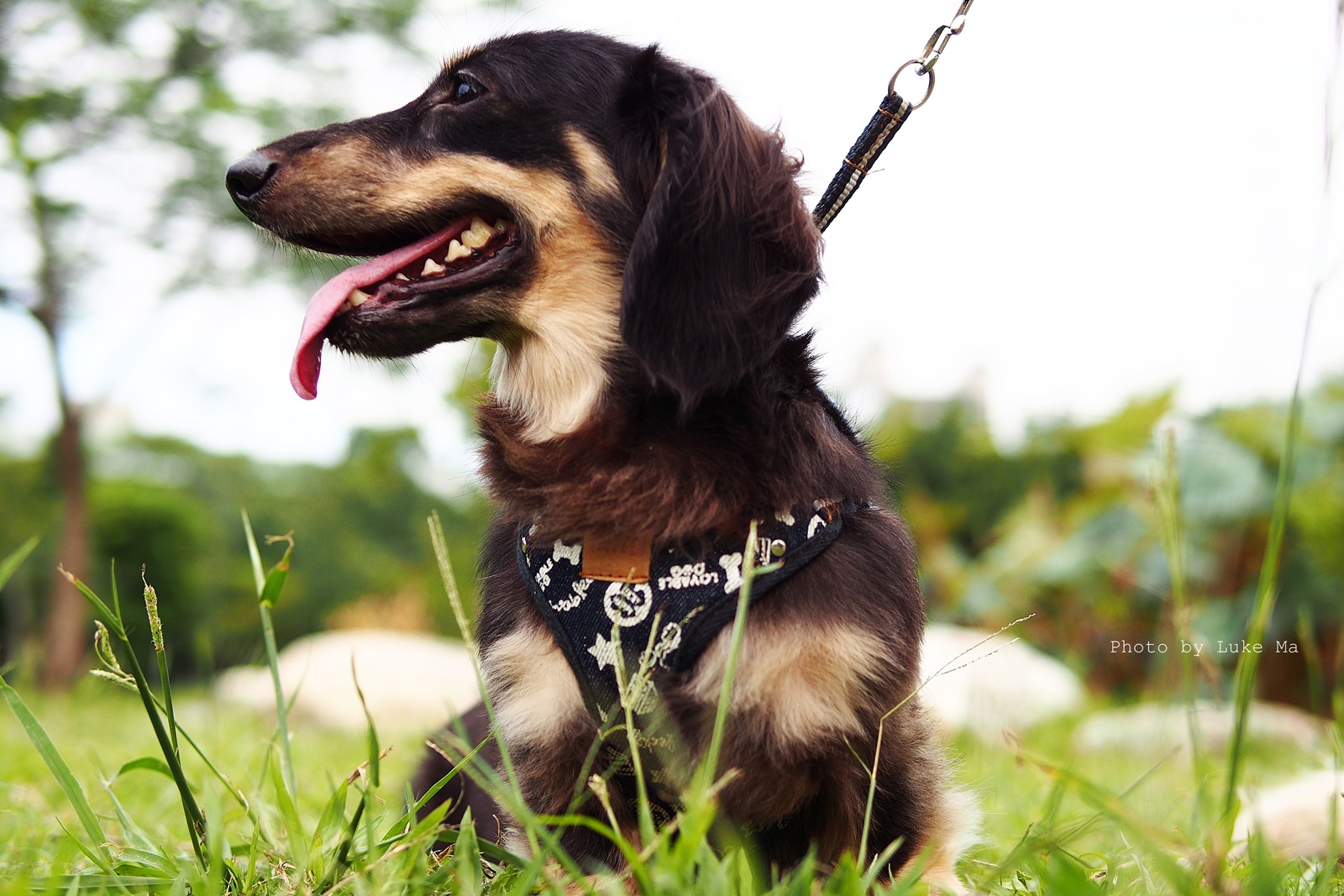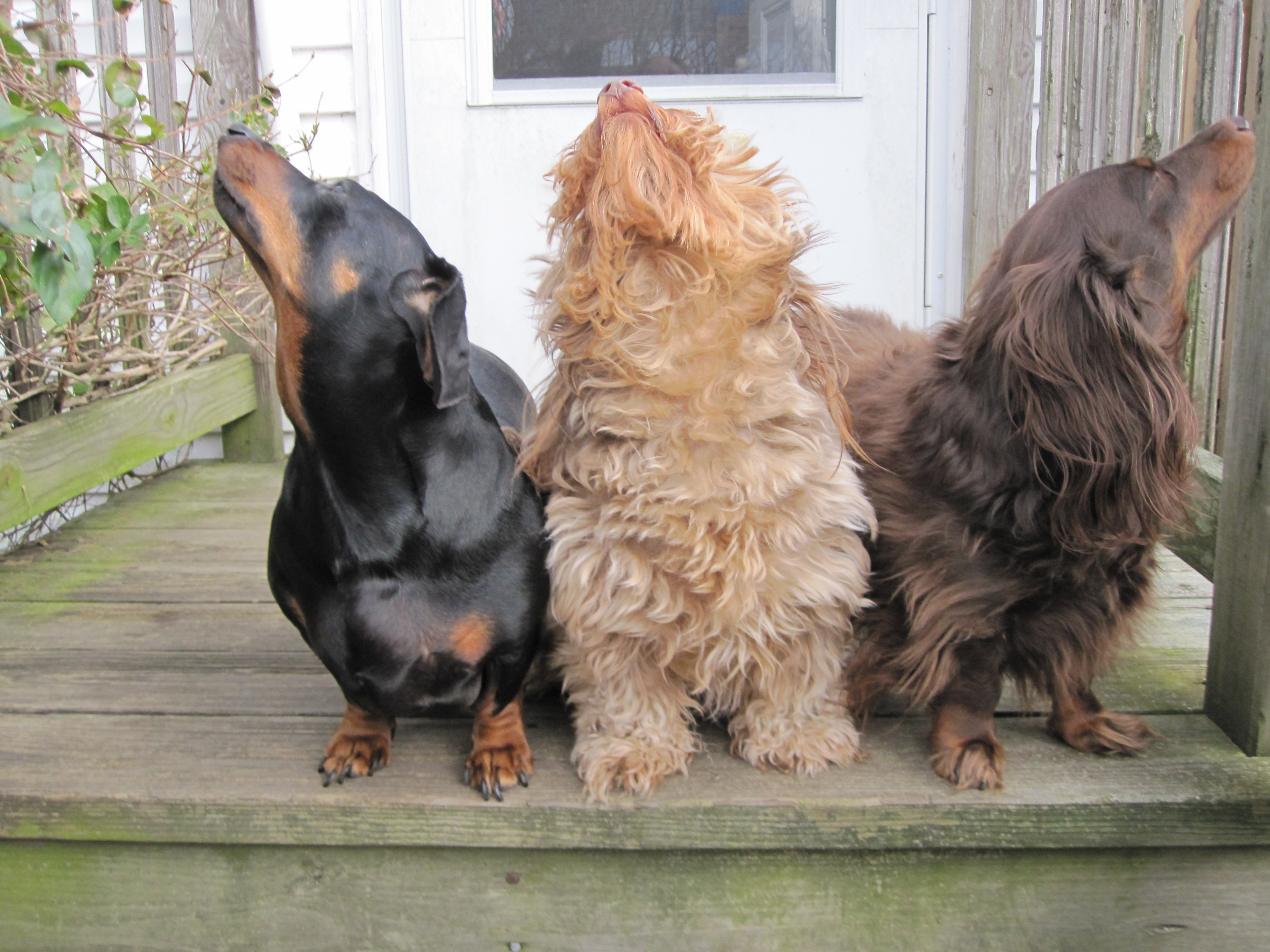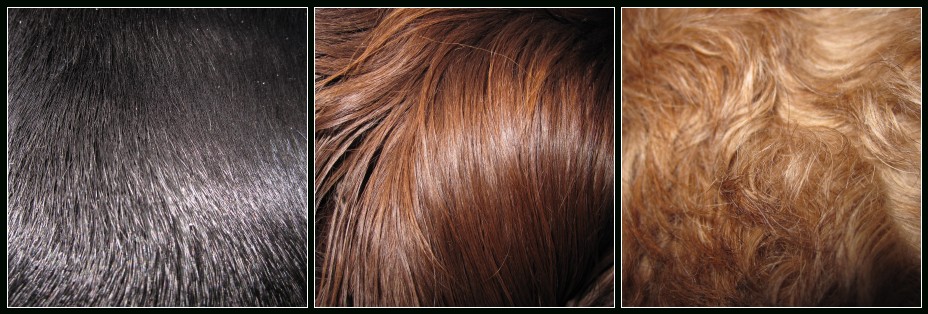Dachshunds, often known as the Hot Dog, the Wiener Dog, the Doxie and the Sausage Dog, are short, cute dogs that are popular among people who prefer small dogs. In German, their name means “Badger Dog,” and these dogs were once used to attack burrowing mammals, such as badgers. Even though these dogs have a funny appearance, they are athletic and smart, making great pets.
Origin
The Dachshund traces all the way back to Germany, with the breed going back to the 1600s. The breed was developed with a bold attitude and streamlined shape so they could hunt and fight off badgers, and other types of mammals that had underground dens. Even though they are small, they had the courage, stamina and strength needed to hunt badgers. In some cases, Germans even used Dachshund packs to hunt other animals, such as rabbits, ermine, foxes, weasels, deer and wild boar.
In the 1870s, Dachshunds were originally called German Badger Hounds, since it was thought that the breed was a hound breed. It wasn’t until later that individual’s argued that the Dachshund was a terrier. Still today, some argue whether this breed is a hound or a terrier.
In 1881, the Dachshund Club of England was founded and a few years later, the Deutscher Teckelklub was founded in Germany. After the Second World War ended, German breed clubs took responsibility for amanging the breed, focusing on the hunting capabilities of these dogs.
Dachshunds started to become popular in American within the late 1800s and the early 1900s. In 1895, the Dachshund Club of America was first started and the dogs only continued to gain popularity within the country. However, within the United States, this breed is rarely used as a hunting dog, although they do perform well in field trails and other demonstrations that require them to show off their hunting instincts.
Appearance
The Dachshund is a long dog with short legs that put the body close to the ground. This appearance is the reason they are often called Hot Dog or Wiener Dogs. Although they are small, they have powerful jaws and legs and an overall muscular body. The nose is long and tapering and their long, flap-down ears add to their cute appearance. While the body is small, these dogs have unusually large feet for their size. Both miniature and standard Dachshunds are available.
The coat of Dachshunds may come in three different varieties, including longhaired, wirehaired and smooth. The smooth coat is shiny, smooth and short and may come in various patterns and colors. Dachshunds may be single colored, including cream or red colors. Two-colored dogs may come in fawn with cream or tan markings, black, chocolate, gray blue or chocolate. Dappled Dachshunds are also available and often have a darker coat that includes light markings on it. Brindle Dachshunds feature a striped, dark pattern across the body.
The longhaired Dachshund has long, wavy hair that looks lustrous and silky when dogs are groomed properly. They come in all the same color variations of the smooth coated Dachshund. Wirehaired Dachshunds have a medium-length, thick topcoat over a soft undercoat. The main feature of the wirehaired Dachshund is the scruffy, short beard they display, and wirehaired dogs also come in the same colors as smooth coated Dachshunds.
Miniature Dachshunds weight less than 11 pounds, while the Standard Dachshund weighs from 16-32 pounds. Some breeders have started a movement for what they call “Tweenies,” which weigh from 11-16 pounds, although these dogs are not officially recognized in a category of their own.
Temperament
While Dachshunds are small in stature, they make up for it with a huge personality. Like many other small breeds, they bark a lot, especially when they see other dogs. These dogs love attention and they will try to make sure they are at the center of your attention. Since they don’t like to compete for their owner’s attention, they are best suited for individuals that only have one pet, making them a great choice for people who have plenty of time to devote to their pet.
The most common behavioral problem among Dachshunds is barking. They’ll bark when they see strange animals or people in the area, making them good watchdogs. This breed can also be possessive of people, their space and their favorite toys, which means they are not a good choice for families that have younger children. Since these dogs love digging, it is a good idea to avoid leaving them unattended outdoors. Even if a fence is in place, they are known to get out by digging under a fence.
Dachshunds prove difficult to train, especially when it comes to house training. These dogs like being in charge, so it’s often difficult to get Dachshunds to obey. When training this breed, it is important to have plenty of patience and treats are helpful as well. Harsh treatment does not work and may result in biting or snapping.
Grooming
The Smooth Dachshund requires relatively little grooming and they rarely have a dog odor. They do not need frequent bathing and should only be bathed when they get dirty. Simply using a damp cloth to wipe down the coat will keep these dogs looking beautiful between bathing. The Smooth Dachshund does shed, but a weekly brushing will help keep that problem under control.
However, Wirehaired Dachshunds have longer hair that requires daily brushing to avoid debris and matting in the coat. They also need to be bathed more often. A couple times each year, the coat must be stripped, eliminating the dead hair from the dog’s coat. In most cases, it’s best to have a professional groomer take care of the stripping so it can be done without causing pain.
Regular bathing is important for Longhaired Dachshunds and they should be blow-dried to ensure their coat looks nice. It is important to brush their coat daily to avoid matting.
The long, floppy ears of the Dachshund is prone to infection, so it’s important to regularly check and clean out the dog’s ears.
Working Roles
While the Dachshund was originally developed to kill badgers and other burrowing mammals, these dogs rarely work in this field today. Most are kept as pets. In some cases, owners train dogs to race in popular Dachshund races like the Wiener Nationals. Earthdog trials are also popular for this breed.
Health
Dachshunds usually live to be between 12-15 years old. They are at risk for several health problems, and due to their long body, they often deal with spinal problems. The long spinal column often results in intervertebral disk disease. The risk of this disease and injury to the spine may be increased by intense exercise, jumping, obesity and rough handling. Nearly a quarter of these dogs will end up developing intervertebral disk disease at some point in their life. Anti-inflammatory medications, crate confinement and pain medications are often used to treat this problem. Some of the other common health concerns for this breed include congenital deafness, pattern baldness, sick sinus syndrome, ocular disorders, lipomas, patellar luxation, Cushing’s syndrome, allergies, dental problems and hereditary epilepsy. Quality breeders work to eliminate hereditary problems, so it is essential to purchase a Dachshund from a reputable breeder to avoid health problems.



